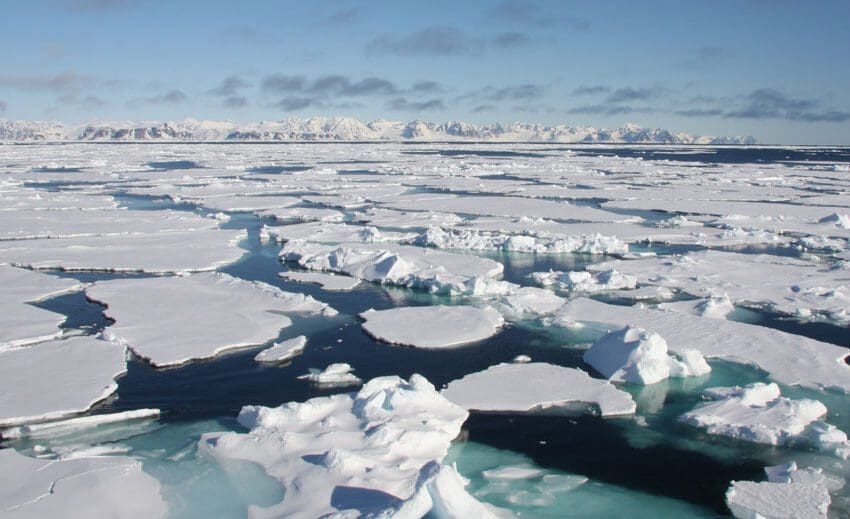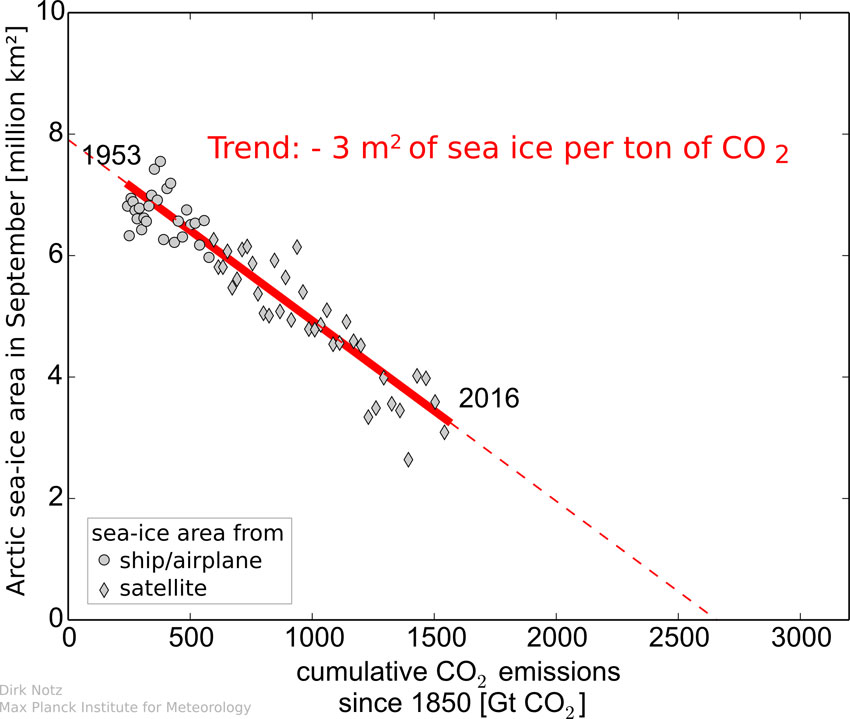How much do YOU contribute to the melting of sea ice in the Arctic?

Summer sea ice near the ice edge in northwestern Spitsbergen. Photo: Eva Therese Jenssen/UNIS.
Top image: Summer sea ice near the ice edge. Photo: Eva Therese Jenssen/UNIS.
The amount of Arctic sea ice in summer decreases every year. How much do you and I contribute to this? How much does a roundtrip by airplane to Oslo or the running of the Longyearbyen power plant contribute to the melting each year?
16 March 2017
Text: Dirk Notz, associate professor at the Max-Planck-Institut für Meteorologie and UNIS
The Arctic sea ice extent is at its minimum in September. This is often called the summer ice. We have investigated the relationship between the global greenhouse gas CO2 and extent of summer sea ice in September. We found that both are linearly related: The more CO2 we humans emit, the less summer ice there is in the Arctic.
The linear relationship gives a loss of about 3 m² summer ice for every ton of CO2 emitted anywhere on our planet. This is because CO2 emissions accumulate in the atmosphere and warms up the climate. This melts a bit of summer sea ice, which causes the ice on the edge of the pack ice to disappear completely. Thus, the extent of summer sea ice shrinks.
Last year I and a colleague published the article “Observed Arctic sea-ice loss directly follows anthropogenic CO2 emission” in Science. There we show that such a linear relationship can be concluded on the basis of some fairly simple geometric reasoning and is also simulated in all global climate models.
Roundtrip Oslo-Svalbard equals loss of 1 m² summer ice
The simple ratio of 3 m² less summer ice for each ton of CO2 emissions permits us to calculate the impact of our everyday actions on the Arctic sea ice. For example, a round-trip flight from Oslo to Svalbard emits approximately 380 kg CO2 per passenger, which corresponds to a loss of 1 m² summer ice per passenger.
Another example would be coal-fired power plant in Longyearbyen, which burns around 30 000 tons of coal each year. This means that the power plant has an emission of approximately 90,000 tons CO2 annually, since the combustion of one ton of coal equals emissions of 3 tons of CO2.
This means that these 90 000 tons of CO2 causes approximately 270 000 m² of the Arctic summer ice to melt.
Summer sea ice gone in 20 years
The remaining approximately 3 million km² of summer sea ice in the Arctic will largely be absent as a result of approximately 700–1000 gigaton CO2 emissions. With today’s global CO2 emissions of about 35 gigaton annually, the Arctic summer ice might be a thing of the past within 20 years. But if we reduce CO2 emissions quickly, the summer ice can last much longer.
Reference:
Dirk Notz and Julienne Stroeve: “Observed Arctic sea-ice loss directly follows anthropogenic CO2 emissions.” Science, 11 November 2016.
https://science.sciencemag.org/content/354/6313/747
